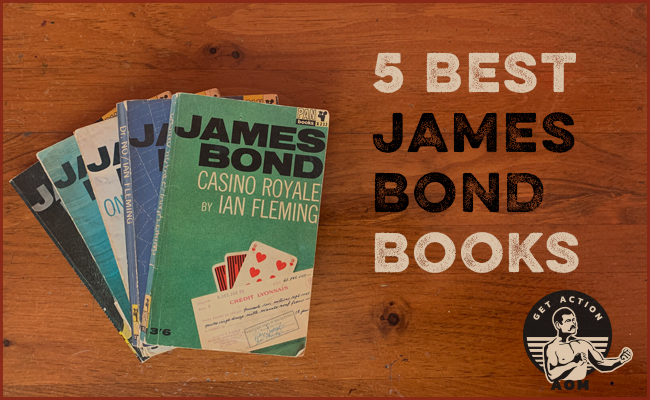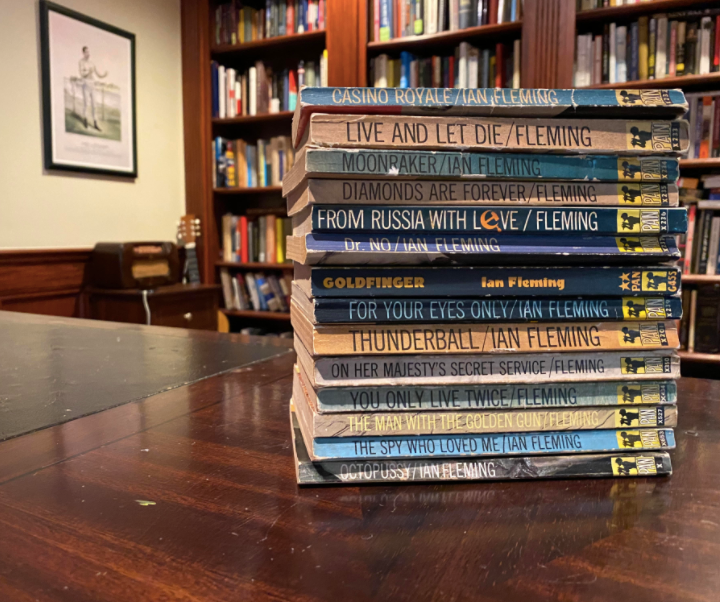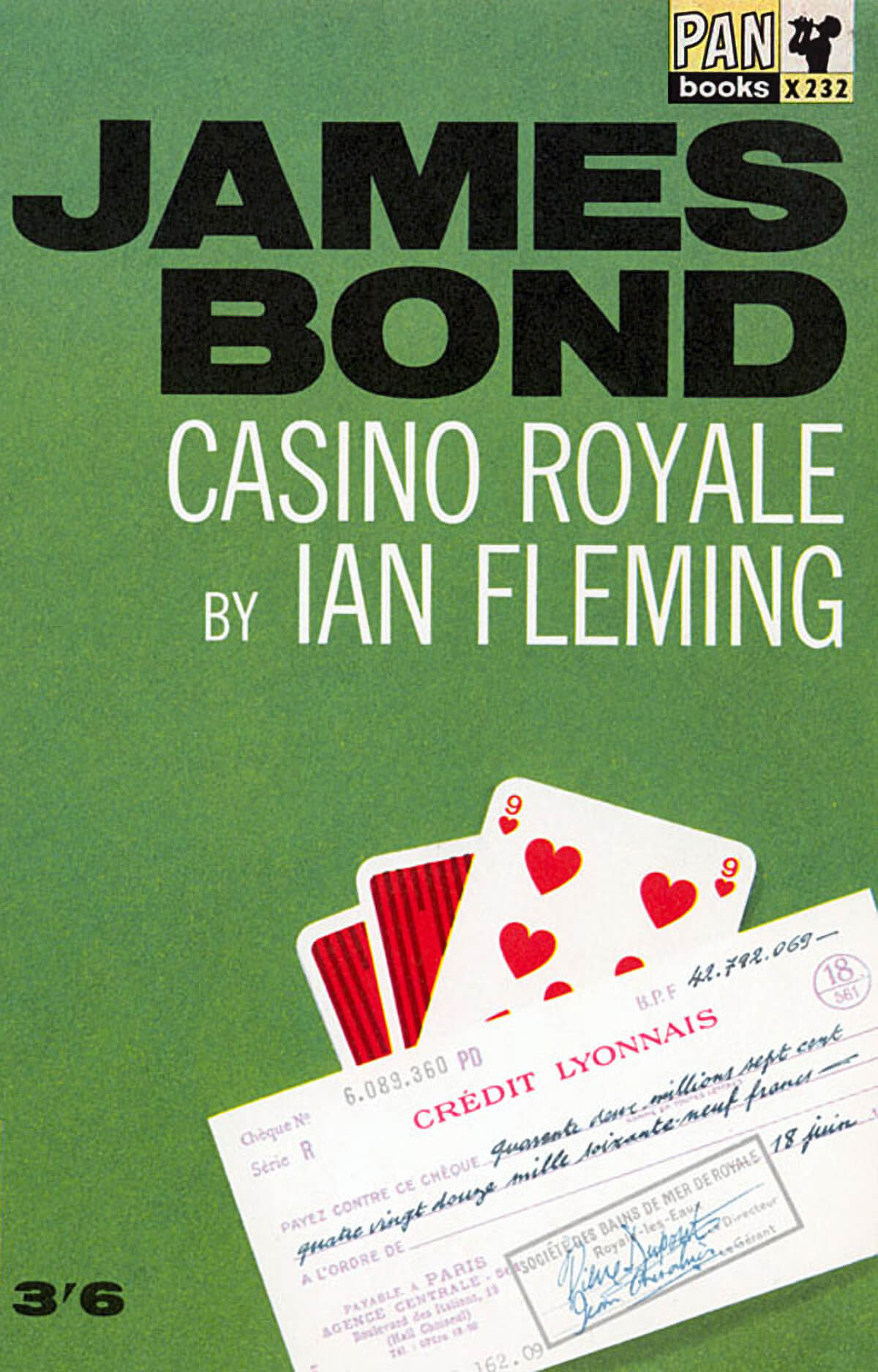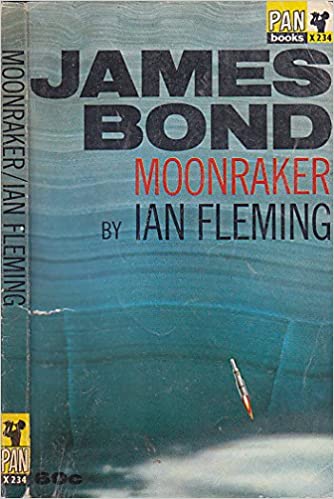
Bond, James Bond.
Many in the younger generations likely know this most famous fictional secret agent from the 26 films in which the character has appeared, particularly as played by Daniel Craig over the last decade and a half. But of course, Bond was originally birthed from the pen of Ian Fleming. And the literary Bond is far superior to the cinematic one.
Fleming’s Bond, who he said “was a compound of all the secret agents and commando types I met during [WWII],” is a more human figure and less the near-superhero Jason Bourne type. He almost never employs gadgets, doesn’t engage in parkour-requiring gymnastics or even very many hand-to-hand fights, and almost invariably gets captured, and thoroughly pummeled, by his enemies. His ultimate escape and triumph typically comes down less to his use of technology or strength than his wits — his keen powers of observation, his wide variety of skills, his savoir faire.
The superiority of the Bond books over the Bond films lies in the space Fleming has to detail these qualities. While the author never delves all that much into the inner life of 007 or the other characters he interacts with, Fleming is a master of describing externals, bringing to life his stories’ rich backdrops, offering compelling technical details drawn from his own experience as a Naval Intelligence Officer during the war, and somehow making all of Bond’s idiosyncrasies and personal habits — from how he dresses to what he eats for breakfast — feel like interesting and noteworthy facts. Fleming’s gift is in creating a character we know is incomparably cool, without ever saying so explicitly.
The books, though hardly high literature, also contain, if you pay attention a surprising number of subtle philosophical tidbits: musings on good and evil, the will to survive, and the desire to live life to the hilt (we’ll highlight some of these later).

Before his death at age 53, Fleming wrote 12 Bond novels and 2 short story collections over the course of the 1950s and 60s. (Products of their time, they’re full of outmoded takes on things like gender and race, and not for the easily offended.) Each of these thrillers possess the quintessential James Bond-ian hallmarks: plenty of action, adventure, and suspense conveyed in Fleming’s forceful, driving style; some combination of fast cars and exotic locales; ridiculously implausible plotlines that Fleming somehow manages to make feel entirely possible; and beautiful women (though the Bond girls in the books aren’t lightweight eye candy; almost to a one they’re independent types who eschew make-up, boast athletic physiques, and sometimes come to the rescue of their tough-but-protective lover, who, for his part, falls much harder for them than might be imagined from his playboy reputation). None of the tales are truly terrible; as Fleming observed, “the great thing is that each one of the books seems to have been a favourite with one or other section of the public and none has yet been completely damned.â€
But some of the novels are a cut above the rest. The following are the five best, in ascending order; as all the stories are fairly self-contained, you can pick up any of them without having previously read any of the others.
5. On Her Majesty’s Secret Service

Generally speaking, the first seven Bond books represent the better half of the series. Written in the 1950s, the deepening shadows of the Cold War provide atmospheric weight to these early stories which find Bond directly and indirectly battling the agents of SMERSH, a fictionalized version of a real-life Soviet counterintelligence organization which operates under the motto “Death to Spies!â€
After Goldfinger, SMERSH is disbanded, and Bond’s nemesis over the next three novels becomes Ernst Stavro Blofeld and his apolitical criminal organization, Spectre. Bond’s battles with this ring of international gangsters just aren’t as satisfying as those against murderous commies . . . with the exception of On Her Majesty’s Secret Service.
As we’ll see in other picks in this list, Fleming is at his best when Bond is stuck in closed quarters, wherein something is happening other than what is presented, and he must discover what’s really going on beneath the polite façade. Here those quarters are a Swiss ski resort, which also contains a research clinic run by a disguised Blofed, who is purportedly working to cure a gaggle of beautiful farm girls of their allergies. The plot is one of Fleming’s most preposterous, but with an exciting ski chase, ample demonstrations of Bond’s athleticism and intellect, a greater showcasing of his deeper side, and his one and only marriage, it’s a wonderfully compelling page-turner.
4. Casino Royale

The book that started it all and introduced the world to Commander James Bond, agent of the British Secret Intelligence Service and member of the Royal Naval Reserve. Here we first learn of Bond’s signature martini (which he names the “Vesperâ€), his prowess in gambling, and his skills as a secret agent (which include techniques for detecting whether someone’s been snooping in your room). Bond must beat and bankrupt Le Chiffre — the paymaster for a SMERSH-controlled trade union — in a high-stakes games of baccarat. But once he does, the story isn’t over: there are still two more twists to come, as the novel moves through essentially three acts and several emotional ups and downs.
3. From Russia With Love

Fleming thought that From Russia With Love was possibly his best novel, and John F. Kennedy listed it as one of his ten favorite books.
This novel draws much of its strength from the unique structure of the plot: rather than starting the book from Bond’s perspective, the first ten chapters focus on the machinations of SMERSH and its plan to assassinate 007 using psychopathic agent Donovan “Red†Grant. When Bond finally enters the scene in the eleventh chapter, the reader knows that when he’s assigned to bring back to England an apparent defector in the form of a beautiful female corporal from Soviet Army Intelligence, he’s falling into a trap, but the details of how that trap will unfold, and when Bond will figure out the real score, remain suspensefully unknown. That this unfolding takes place onboard the thoroughly romantic, drama-heightening confines of the Orient Express, adds to the deliciousness of the story.
With the ending, Fleming leaves Bond’s fate hanging (as Arthur Conan did with Sherlock’s in “The Final Problemâ€). Feeling burnt out, the real-life author was unsure if he would write any more Bond novels after this one. Luckily, he caught a second wind, and From Russia With Love became only the mid-point of his 12-novel career.
2. Dr. No

Dr. No was not the best reviewed of the Bond books, and there’s plenty to criticize here: The plot is arguably Fleming’s most ridiculous, centering on an evil genius who is plotting world domination from an underground lair built beneath an island that functions as a guano mine; it’s the kind of set-up that launched the Austin Powers satirizations. The Bond girl is particularly unbelievable — an orphaned, shell-diving, sort of child of the wild. And there’s a particularly strong streak of an element that was present to varying degrees throughout the Bond series: sadomasochism.
And yet . . . somehow it works. One gets to see down-and-dirty, outdoor survivalist Bond who leaves behind the suit and cocktails to paddle to the island and explore its swamps. And learning exactly what the villainous Dr. No is up to, including why he’s imprisoned Bond in what seems to be a luxury spa, is gripping. A highlight of the book is a debate between Dr. No and Bond on the nature of power, in which the villain argues for the importance of securing your base.
1. Moonraker

Hands down the best Bond book (and far different than the movie of the same name).
Moonraker includes details of Bond’s day-to day personal and work routines when he isn’t on an assignment (which only occur every few months — alas, even 007 had to do paperwork sometimes).
In most of Fleming’s books, 007 knows who the bad guy is from the start, and pursues this enemy to far-flung parts of the world (the Secret Service doesn’t operate domestically). In Moonraker, however, Bond stays within the borders of England to keep bad guys away from Hugo Drax, a successful industrialist and national hero with a mysterious background who seems to be an eminently good guy. Or is he? Bond has his doubts after he memorably discovers that Drax cheats at cards. Nonetheless, Bond is pledged to protect the powerful rocket Drax has built for the ostensible purpose of defending England from her enemies. Again, the confines of the missile-building base where Bond is stationed work to the narrative’s benefit, and of all the novels in the series, this story most unfolds in the manner of a classic detective tale. Suspense builds as Bond sifts through clues and slowly discovers that Drax may not be who he says he is. Even when you see the twist coming, it’s still delicious.
Tags: Books

